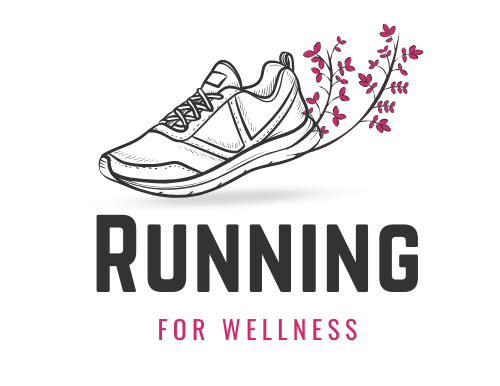Running a half marathon in under two hours represents a major personal milestone for many amateur athletes. Achieving this goal requires maintaining an average pace of roughly 9 minutes and 9 seconds per mile (about 5:41 per kilometer) over the entire 21.1 kilometers.
That kind of consistency demands not only physical endurance but also smart training, pacing control, and mental preparation.
Such a target is most suitable for runners who already have a strong base. Those who comfortably run three to four times per week, have completed a 10K, or even a previous half-marathon will find this plan ideal for improving speed and stamina.
It bridges the gap between casual running and serious time-oriented performance, helping runners push past previous limits.
Structuring the 10-Week Training Plan
Creating a 10-week plan offers enough time for improvement without overwhelming the runner.
It compresses the structure of a traditional 12-week program while maintaining progressive overload. Each week builds on the last with controlled increases in volume and effort.
A consistent weekly structure helps balance workload and recovery.

- Monday: Rest or light stretching and strength work to start fresh.
- Tuesday: Interval training, progressing from 4x1K to 6x1K.
- Wednesday: Easy-paced run or complete rest for recovery.
- Thursday: Tempo run starting at 6–8 km and peaking at 10–12K.
- Friday: Rest or optional cross-training.
- Saturday: Recovery run of 6–8K at a relaxed pace.
- Sunday: Long run with gradual distance buildup over weeks.
Important milestones to track throughout the plan include:
- Week 5: Long run of about 17 km, establishing endurance.
- Week 7: Longest long run, extending to 22–24 km.
- Week 9: Start of the taper phase, reducing mileage and effort.
- Week 10: Race week, featuring short, easy runs and optimal rest.
Each session has purpose and progression, ensuring adaptation without risking injury. Gradual mileage increases combined with sufficient recovery create steady improvement while maintaining energy and motivation.
Components of a Sub-2-Hour Plan
Achieving a sub-2-hour half marathon requires more than just running frequently. It depends on following a structured program where every workout type serves a purpose.
Each component targets a specific aspect of fitness, combining to build speed, endurance, and recovery capacity.
Below is a detailed breakdown of each essential training element and how it fits into the bigger picture of performance improvement.
Long Runs

Consistent long runs build the foundation of endurance. They train the heart, lungs, and muscles to perform efficiently over extended periods. Gradually extending distance up to 22–24 kilometers prepares the body for the fatigue of race day.
These runs are not about speed but about maintaining a steady pace that challenges stamina while staying comfortable.
- Start slower than goal pace to preserve energy.
- Add 1–2 km every week until reaching 22–24 km.
- Practice race-day nutrition and hydration strategy.
- Use these runs to mentally rehearse pacing and consistency.
Tempo Runs
Tempo sessions strengthen aerobic capacity and help maintain pace under fatigue.
They simulate race effort without going all-out, teaching the body to clear lactic acid efficiently and sustain effort near threshold.
Runners typically begin with shorter efforts and progress toward 10–12 km at or slightly faster than race pace.
- Warm up for 2 km before starting tempo pace.
- Maintain effort where talking feels difficult but sustainable.
- Cool down for 1–2 km afterward.
- Include at least one tempo session per week.
Intervals
@louisphillips12 How to do an interval session 🏃♂️ #running #howto #fitness #training #marathon #beginner ♬ original sound – Colin 🛠️
Speed sessions like 400m, 800m, or 1K repeats develop cardiovascular strength and improve running economy.
These workouts teach the body to handle higher intensity so race pace feels easier over time. They also improve stride efficiency and mental toughness.
- Run each rep faster than goal race pace.
- Rest between intervals for 1–2 minutes of slow jogging or walking.
- Begin with 4x1K in early weeks and progress to 6x1K later.
- Focus on maintaining consistent effort across all repetitions.
Recovery Runs
Short, easy-paced runs around 5–8 km serve as active recovery between hard sessions.
These runs encourage blood flow to fatigued muscles, reduce stiffness, and improve long-term adaptation.
Keeping pace slow and comfortable ensures recovery rather than additional fatigue.
- Promoting muscle repair and circulation.
- Helping maintain weekly mileage without overexertion.
- Improving aerobic base through low-intensity effort.
Rest Days

Resting allows the body to absorb training benefits and rebuild stronger.
Skipping rest often leads to fatigue, injury, or burnout. A structured schedule must include complete rest or light activity such as walking, yoga, or stretching.
- Scheduling at least one full rest day weekly.
- Prioritizing quality sleep for recovery.
- Listening to the body’s signs of fatigue and adjusting training if necessary.
Cross-Training
Alternative exercises such as cycling, swimming, or resistance work supplement running while minimizing impact stress.
Cross-training supports cardiovascular endurance, strengthens stabilizing muscles, and keeps training engaging.
- Cycling: Builds leg power and aerobic endurance.
- Swimming: Enhances lung capacity and recovery.
- Bodyweight strength workouts: Improve core and joint stability.
- Yoga or mobility training: Prevent stiffness and improve flexibility.
Hill Workouts
Short hill repeats early in the plan boost strength, power, and running form.
They simulate resistance training while maintaining a running-specific focus. Strong legs developed through hill sessions translate to improved efficiency on flat races.
- Start with 6–8 short hills (30–45 seconds uphill).
- Focus on driving knees and maintaining upright posture.
- Jog or walk back down for recovery.
- Use moderate gradients to avoid overstraining.
Race Strategy for Sub-2 Success
Crossing the finish line under two hours demands strategic pacing, smart fueling, and strong mental control. A well-rehearsed race plan helps avoid common mistakes like starting too fast or neglecting hydration.

Pacing Plan
Early restraint leads to stronger finishes.
The initial 5 kilometers should be run around 5:45–5:50 per kilometer, setting a conservative tone. Between 6–18 kilometers, maintaining 5:35–5:40 per kilometer keeps momentum steady without overexertion.
During the final 3 kilometers, an energy push can close the gap if reserves allow.
Nutrition and Hydration
Energy management plays a vital role in sustaining pace. Practicing fuel intake during long runs ensures no surprises on race day.
- Consume 2–3 energy gels spaced evenly throughout the race.
- Hydrate every 4–5 kilometers using small sips of water or electrolyte drink.
- Test all nutrition in training to avoid stomach discomfort.
Mental Focus
Mental strength often determines performance when fatigue hits. Crowded starts and adrenaline can cause pacing errors, so maintaining focus and breathing is critical.
- Stay calm in the opening kilometers and avoid racing others.
- Break the distance into smaller, manageable sections.
- Use positive affirmations to stay composed when tired.
- Visualize strong finishes during training to reinforce confidence.
Gear and Equipment Tips

Preparation goes beyond running sessions. Proper gear contributes to comfort, consistency, and confidence throughout the training cycle and on race day.
Every piece of equipment should be tested well in advance to avoid unpleasant surprises.
Running Shoes
Selecting the right pair of shoes directly affects performance and injury prevention. Comfort and fit take priority over brand reputation.
Shoes should be lightweight yet cushioned enough to handle long distances comfortably.
- Use shoes with at least 50–100 km of break-in time.
- Rotate between two pairs to extend lifespan and improve recovery.
- Match shoe type to running style and terrain.
- Replace shoes after approximately 600–800 km of use.
Race Kit
Training in race-day gear ensures comfort under race conditions. Proper attire prevents chafing and helps regulate body temperature. Even minor irritations can become major distractions during a long run.
- Moisture-wicking top and shorts.
- Breathable, well-fitting socks to prevent blisters.
- Weather-appropriate layers or accessories (cap, gloves).
- Lightweight running belt for gels and hydration.
Summary
Achieving a sub-2-hour half marathon is entirely realistic with proper discipline, smart training, and patience. Consistency across all ten weeks builds the physical foundation and mental toughness necessary for sustained effort.
Enjoy every stage of preparation — the long runs, the small victories, and the growing confidence. Finishing under two hours is not just a reflection of speed but of persistence, structure, and commitment to improvement.
Related Posts:
- 10K World Records - USA and Global Champions Compared
- How Far Is a Half Marathon? Everything You Need to Know
- How Can You Start a Career as a Running Coach?
- How Long Does It Take to Train for a Half Marathon?
- 25 Simple Running Motivation Tips To Get You Moving
- 10 Best Running Documentaries - Inspiring Films for Runners







